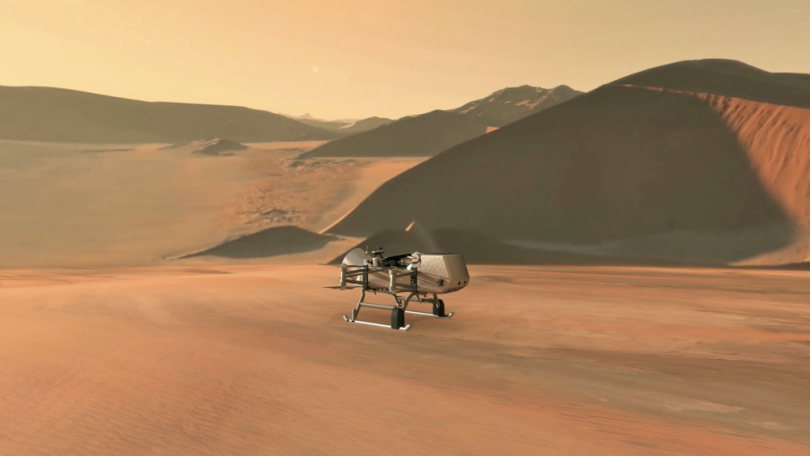NASA plans to explore Saturn's moon Titan by sending a drone that can fly through the icy world's skies to search for signs of alien life.
Instead of using a land-based rover, the upcoming Dragonfly mission will leverage a "rotorcraft," which can take off, fly, and land. The goal is to send the nuclear-powered drone to investigate dozens of locations across Titan, which scientists have long theorized may harbor an environment to sustain organic life.
"Dragonfly marks the first time NASA will fly a multi-rotor vehicle for science on another planet," the space agency said in Thursday's announcement. The machine will have eight rotor propellers, which will allow it to maneuver like a drone.
According to NASA, the craft should also be easier to fly on Titan because the moon has a denser nitrogen-based atmosphere and less gravity than the Earth. However, the machine will have to endure the icy world's minus 290 Fahrenheit temperatures and methane-based rain.
After Dragonfly arrives to the moon via rocket, NASA plans to send the craft to explore dunes and impact craters on Titan, where liquid water and the organic materials necessary to form life will likely be present. Sensors on board the machine will be able to study the moon's conditions and search for life forms. In total, the rotorcraft will fly more than 108 miles, or nearly double the distance of what NASA's land-based rovers on Mars have traveled.
"Visiting this mysterious ocean world could revolutionize what we know about life in the universe," NASA Administrator Jim Bridenstine said in a statement. "This cutting-edge mission would have been unthinkable even just a few years ago, but we're now ready for Dragonfly's amazing flight."
Unfortunately, it'll be some time before NASA sends the drone on a rocket into space. Expect Dragonfly to launch in 2026 and arrive on Titan in 2034. The last probe to land on Titan occurred in 2005, and the machine operated on the surface for only 72 minutes.
Recommended by Our Editors

 NASA thinks that Saturn's rings are disappearing
NASA thinks that Saturn's rings are disappearing
Get Our Best Stories!
Sign up for What's New Now to get our top stories delivered to your inbox every morning.
This newsletter may contain advertising, deals, or affiliate links. Subscribing to a newsletter indicates your consent to our Terms of Use and Privacy Policy. You may unsubscribe from the newsletters at any time.
Thanks for signing up!
Your subscription has been confirmed. Keep an eye on your inbox!
Sign up for other newslettersRead the latest from Michael Kan
- This Acer Laptop's Touchpad Turns Into a Detachable Gamepad
- Qualcomm Tips Lower-Cost Snapdragon Laptops With X Plus 8-Core Chips
- Elon Musk: Cellular Starlink Will Only Be Exclusive on T-Mobile for the First Year
- FCC Rejects Citizen Effort to Revive $886M in Funding for SpaceX's Starlink
- Windows 11 Dethrones Windows 10 to Become New King of PC Gaming
- More from Michael Kan












